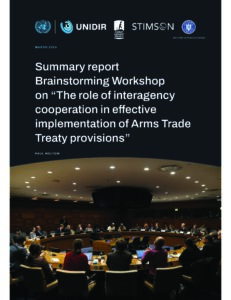Introduction
States Parties to the Arms Trade Treaty (ATT) are required to report on their conventional arms exports and imports each year. Under Article 13(3) of the ATT, States Parties must report annually to the treaty Secretariat “concerning authorized or actual exports and imports of conventional arms” that occurred during the previous calendar year. These reports have the potential to provide much-needed transparency in the notoriously opaque global arms trade.
States Parties first began reporting on their arms transfers in 2016 (capturing those imports and exports that occurred in 2015), yet ATT annual reporting has yet to live up to its full potential. Universal adherence to the treaty’s annual reporting requirement has remained elusive, with reporting compliance rates having declined nearly every year since the first year of reporting. The first seven years of ATT annual reporting have seen a proliferation of troubling reporting practices – including an increase in private reporting – that limit one of the ATT’s primary aims: to increase transparency around international arms transfers. This report analyzes the 2021 ATT annual reports. These reports – though submitted in 2022 – cover authorized or actual arms transfers that occurred in 2021, and so will be referred to throughout this report as 2021 annual reports. This report highlights the key trends, transparency issues, and good practices exemplified by the 2021 annual reports and considers whether some of the negative transparency trends that have plagued reporting for years may finally be showing signs of reversing. The report is organized into three sections. The first section examines the status of 2021 ATT annual report submissions and places them into the context of compliance rates over time. The second section discusses practices and trends in how States Parties have prepared their 2021 annual reports. In particular, this section provides insights into private reporting, report formats, “nil” reporting, national definitions, withholding commercially sensitive and/or national security-related information, and whether and how States Parties reported on their arms exports and imports. The third section compares reporting patterns under the ATT and UN Register of Conventional Arms (UNROCA) and discusses how, by leveraging synergies between the ATT and UNROCA, these two frameworks can mutually reinforce one another and more effectively advance arms trade transparency.




